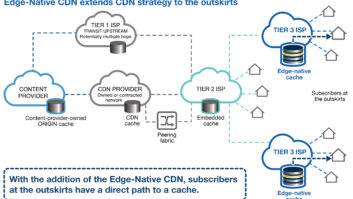
As IPTV is moving from a linear to a complete TV experience incorporating live TV, on-demand services and third party content, the new world of television will bring both opportunities and challenges for operators, developers and integrators. Should they rely on set-top boxes (STBs) to help provide the end consumer with an exciting new TV experience? Matthias Greve (pictured), founder and CEO of ABOX42 speaks to TVBEurope about a rapidly changing market.
What recent developments have there been in STB technology?
Conventional STB platforms are evidently unable to comply with upcoming complex requirements. Traditional closed STB platforms are no longer able to handle the complex requirements of innovative operators. The market will turn from old integrated, proprietary STB products to modern ‘Smart STB’ platforms where the focus has moved to software. We see the same trend in the TV middleware segment, where operators want to move from closed propriety systems to open solutions based on modern internet technologies and open standards.
What are the specific challenges operators are facing today?
The biggest challenge for operators today is to understand the difference between new IPTV and OTT solutions. Basically almost all cable and satellite pay TV operators want to deliver new services like network PVR, VoD and want to add OTT delivery of specific channels to free up bandwidth in their traditional DVB networks.
Are advanced STBs already able to match current and future demands?
IPTV operators who started several years ago need to upgrade their user experiences from inflexible first and second-generation STB platforms to latest (third) generation. These new generation STB platforms allow for the fast development of modern user interfaces, compelling services and the integration of third party services based on HTML5. In addition, these new Smart STB platforms are upgradable and much more future proof than legacy STBs.
Smart STBs have arrived and delivery of HD live TV channels over the internet with OTT technologies is a market proven technology deployed in the mass market already. A new concept of OTT DVB allows not only live TV signal delivery over the internet, but to also include multiple audio tracks, classical Teletext, DVB Subtitle as well as modern HbbTV application via HLS streaming.
What are the latest innovations in OTT and IPTV technologies?
The latest innovations include the support of all major DVB features in both IPTV and OTT, supporting HbbTV services, other OTT services and third party applications with different streaming formats, different DRM systems side by side on the platform. More efficient streaming with H.265 will boost the video quality, especially for OTT, and will allow more efficient content delivery for operators.
What distinguishes new STBs from earlier models?
The new Smart STBs will be able to handle many different standards side by side, such as streaming protocols, DRM and CAS systems. This new Smart STB generation is HTML5 browser based and much more easy to develop. There will be a new focus on the management of the software lifecycle and cloud services to manage the Smart STB during the entire lifecycle.
How do those innovations correspond with typical demands of the operators, ABOX42 ́s customers, and of the end-users?
Depending on legal requirements in a certain country, cloud based recording (network PVR and network timeshift) is the most compelling feature. But also HbbTV offers a great set of additional features and on-demand content which is supported by more and more countries and operators. Last but not least multiscreen applications are increasingly popular since it is not only about ‘on demand’, but about ‘any place, any time’. In general it is all about high quality content and an intuitive user interface. This is what end-users like about the new TV experience.
What role do STBs play now and in future, considering the popularity of Smart TVs and cloud based services?
Modern STBs are designed for local TV applications as well as for emerging cloud based TV services. Since on one hand the operators need to control the user experience and on the other hand need to be ahead of competition with the introduction of new TV features, it will be essential to have a modern, flexible and scalable STB platform for the first screen TV experience of paying end-users. Smart TVs offer a certain range of OTT applications, but will not replace the main STB device in an end-user’s home, which provides a unified, rich TV experience on the first and second screen.
Can you describe explicit trends and concrete plans in the operator area indicating an increased demand for STBs in the next years?
There are two major trends increasing the demand for STBs. Operators who already run an older generation IPTV service will upgrade to a latest generation IPTV and OTT solution which is modern and scalable, which can be integrated seamlessly and offers new compelling features (additional OTT services, HbbTV, NPVR, smart TV applications) and multiscreen capabilities.
Secondly, there are operators without an existing installation planning to move into the TV space with a modern IPTV (or even more often OTT) solution which is easy to roll out, does not require long integration work and offers a great first screen experience combined with multiscreen capabilities.
Can you imagine a ‘set-top box-less’ future for operators?
There is currently some talk from operators about virtual STBs as smart TV apps or STBs as CI+ modules. Since there is today no standard for the virtual STB applications and the vast majority of the installed flatscreen TVs in the household do not support these new applications, the operator still needs to focus on its core STB. This is the device which can be shipped to all subscribers regardless of the type or age of the TV set.
What view should an operator take on the virtual STB?
The best way to view these issues is to treat the virtual STB like the operator would treat an App on iPad, XBOX or PlayStation. It is an add-on but not the core of the operator’s TV solution.
What are the challenges of virtual STBs as apps?
With the virtual STB apps within the smart TV, the operator does not have the same freedom on the user interface side. Also, the quality of service cannot be guaranteed over the lifetime of the app. It is out of the operators’ ́control, how – for example – future software updates of the smart TV manufacture might affect the compatibility and proper functioning of the operator’s TV service.
Also virtual STBs apps are not free of charge and need costly maintenance. If you support different manufacturers and different version of TV sets it quickly adds up to five to ten new platforms which have to be supported each year.
Finally, what are the prospects for the retail market as a channel for multiple services and devices?
We believe the operators, including new OTT operators, are in the driving seat to deploy compelling multiscreen solutions to their customers. Most markets are dominated by pay TV offerings by operators. Looking into the hardware devices, already today lots of retail devices (iOS or Android based) can be enabled as a second screen device, where the operator controls the application for these devices (for OTT services). For the main screen (eg IPTV), the operator will control and provide as well the hardware device (STB).







